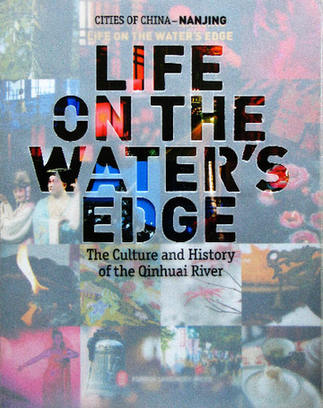Second to None
Second to None
The Beauty of China's Smaller Cities
By WEN FANG
|
 |
Books about Nanjing, Kunshan and Wuxi have been published. Releases on Qingdao, Changzhou, Taizhou, Lianyungang and Suqian will be available soon. Published in Beijing by Foreign Language Press in 2010.
|
IT is a common attribute of people absorbed in the humdrum of their daily lives that they fail to see the special qualities of the cities they call home. How many New Yorkers have never visited the Empire State building? How many Beijingers have never walked on the Great Wall nor explored the Forbidden City? We do not see what is directly around us when the pressures of the “real world” dictate how we spend our time and on what we focus our energies. Familiarity breeds contempt as the saying goes, and the cities covered in this book – China’s so-called second tier cities – have charms often overlooked by their inhabitants. The editors decided that fresh pairs of eyes were needed to take a good look at the many special cities within China that have their own unique climate and cultural environments. This is reason enough to celebrate the Cities of China series.
Selected foreign writers and photographers were let lose to explore these cities of all sizes and lifestyles, their mission to discover the special qualities of each place. Each of them was invited to live in a selected city for a period of time, but not so they could just withdraw to a hotel at night; no, they lived together with the locals to learn the history of these cities as well as the current lifestyles. Through these personal relationships they could put a finger on the true heartbeat of each particular place. The foreigners applied their own cultural traditions to interpret an areas’ lure, giving a freshness to pleasures that locals take for granted. Cities of China uses a local lens as well as a visitor’s perspective.
Its publisher, Foreign Languages Press, had the aim of deepening foreign understanding of less well known Chinese cities, Chinese people, and the country in general. Features include true stories about city dwellers, a rundown on a given city’s current economic development and advances it has made in preserving its unique culture (and making it accessible). The cities highlighted in this series may not be as famous as Shanghai or Beijing, but each is distinctive and important. Many were former national capitals whose beauty lingers. Every special quality forms a kind of city character, as with the tranquility of Nanjing, the dynamic energy of Kunshan, the classical beauty of Suzhou and the picturesque jewel that is Hangzhou.
No matter their size or makeup, their hidden charms have been detected by the sharp eyes of the foreign “transplants,” savored firsthand, and documented for readers with pen and camera. Einar Tangen writes in The Kunshan Way: “When in Kunshan you are constantly aware of the struggle between ancient and modern energies; sequences of empires and their invaders, the rural agriculture and urban manufacturing, and you find a modern republic founded on idealism and governed by pragmatism…” In Kunshan for only half a month, he employed all his senses to divine the true nature of the city.
Writer Bobby Brill found himself deeply intrigued by the stones that make up the Nanjing city wall, each individually stamped and etched with the name of the craftsman who shaped it. “The bricks, though not eye-catching, are the foundation of the Zhonghua Gate and wall that remain well preserved to this day. They deserve our admiration,” says the veteran photographer. The everyday fare for the locals sparked Bobby’s interest on many levels too. Simple things like the local fried beef dumplings left a lasting impression on him, “They look like the new moon, shine like gold ingots, and sizzle when eating.”
If one foreigner comes up with something special in an urban re-discovery trip, a group could produce a bonaza. A company of ten international photographers sent to document Wuxi in Wuxi: Where Ancient Culture Meets Contemporary Life, proved it. The ten photographers present a diverse Wuxi, historically, physically and culturally, from their personal perspectives and in their unique photographic languages.
It was all wrapped by Yang Liu, the distinguished Chinese-German book designer, applying her European training and style to give Cities of China a sophisticated, international feel that incorporates traditional Chinese elements. The participation of foreign writers, photographers and designers give the book a familiar feel, the better to see China through their compatriots’ eyes!
Services
Economy
- Eco-agriculture and Eco-tourism Power Nanchang’s Green Development
- Balance Environmental Protection and Economic Prosperity – Nanchang Looks to European Technology for Green Development
- Sustainable Growth Requires Wiser Energy Use
- Chinese Economy: On the Path of Scientific Development
- China's Economy over the Last Ten Years

